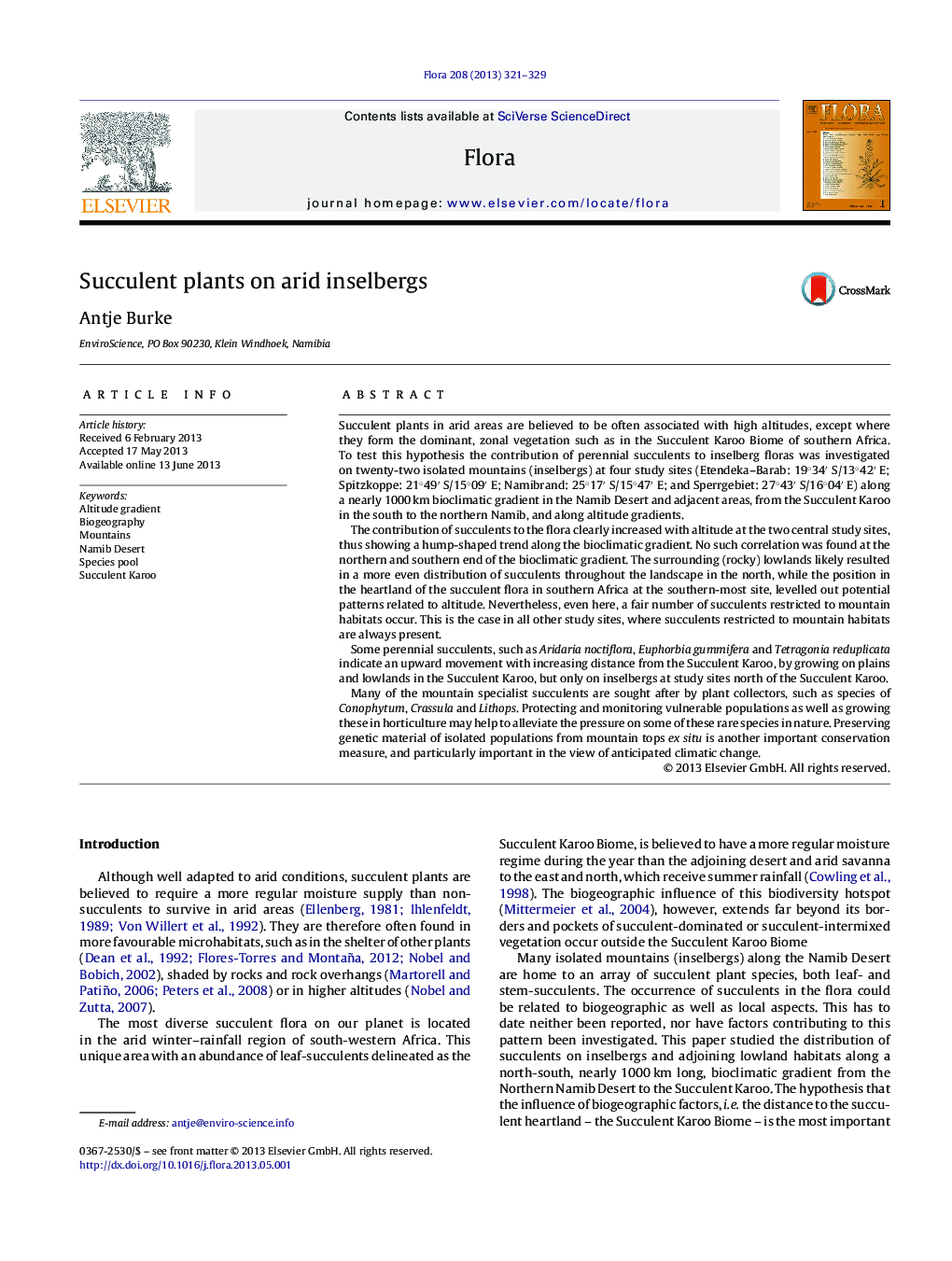| Article ID | Journal | Published Year | Pages | File Type |
|---|---|---|---|---|
| 2179708 | Flora - Morphology, Distribution, Functional Ecology of Plants | 2013 | 9 Pages |
Succulent plants in arid areas are believed to be often associated with high altitudes, except where they form the dominant, zonal vegetation such as in the Succulent Karoo Biome of southern Africa. To test this hypothesis the contribution of perennial succulents to inselberg floras was investigated on twenty-two isolated mountains (inselbergs) at four study sites (Etendeka–Barab: 19°34′ S/13°42′ E; Spitzkoppe: 21°49′ S/15°09′ E; Namibrand: 25°17′ S/15°47′ E; and Sperrgebiet: 27°43′ S/16°04′ E) along a nearly 1000 km bioclimatic gradient in the Namib Desert and adjacent areas, from the Succulent Karoo in the south to the northern Namib, and along altitude gradients.The contribution of succulents to the flora clearly increased with altitude at the two central study sites, thus showing a hump-shaped trend along the bioclimatic gradient. No such correlation was found at the northern and southern end of the bioclimatic gradient. The surrounding (rocky) lowlands likely resulted in a more even distribution of succulents throughout the landscape in the north, while the position in the heartland of the succulent flora in southern Africa at the southern-most site, levelled out potential patterns related to altitude. Nevertheless, even here, a fair number of succulents restricted to mountain habitats occur. This is the case in all other study sites, where succulents restricted to mountain habitats are always present.Some perennial succulents, such as Aridaria noctiflora, Euphorbia gummifera and Tetragonia reduplicata indicate an upward movement with increasing distance from the Succulent Karoo, by growing on plains and lowlands in the Succulent Karoo, but only on inselbergs at study sites north of the Succulent Karoo.Many of the mountain specialist succulents are sought after by plant collectors, such as species of Conophytum, Crassula and Lithops. Protecting and monitoring vulnerable populations as well as growing these in horticulture may help to alleviate the pressure on some of these rare species in nature. Preserving genetic material of isolated populations from mountain tops ex situ is another important conservation measure, and particularly important in the view of anticipated climatic change.
